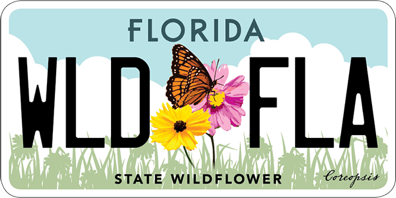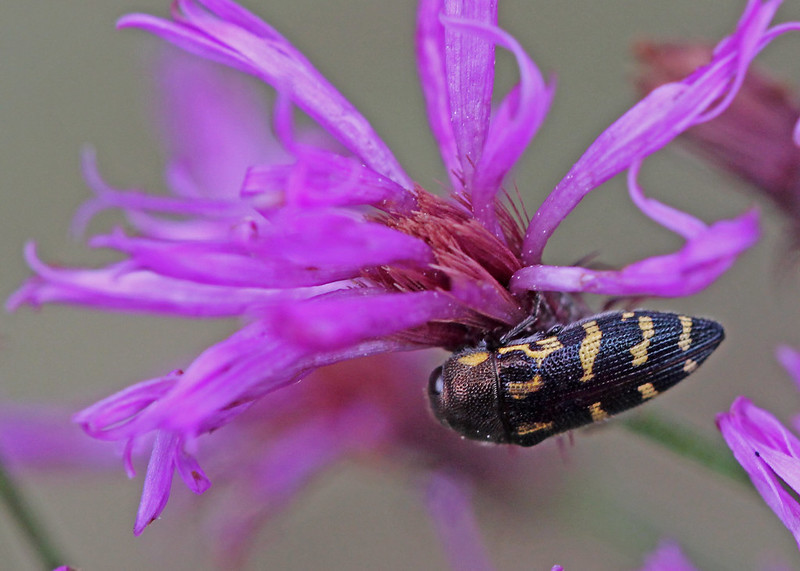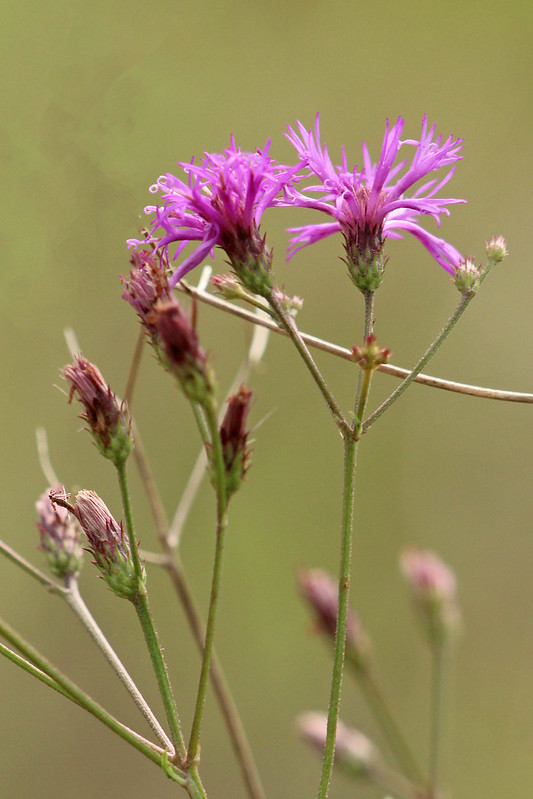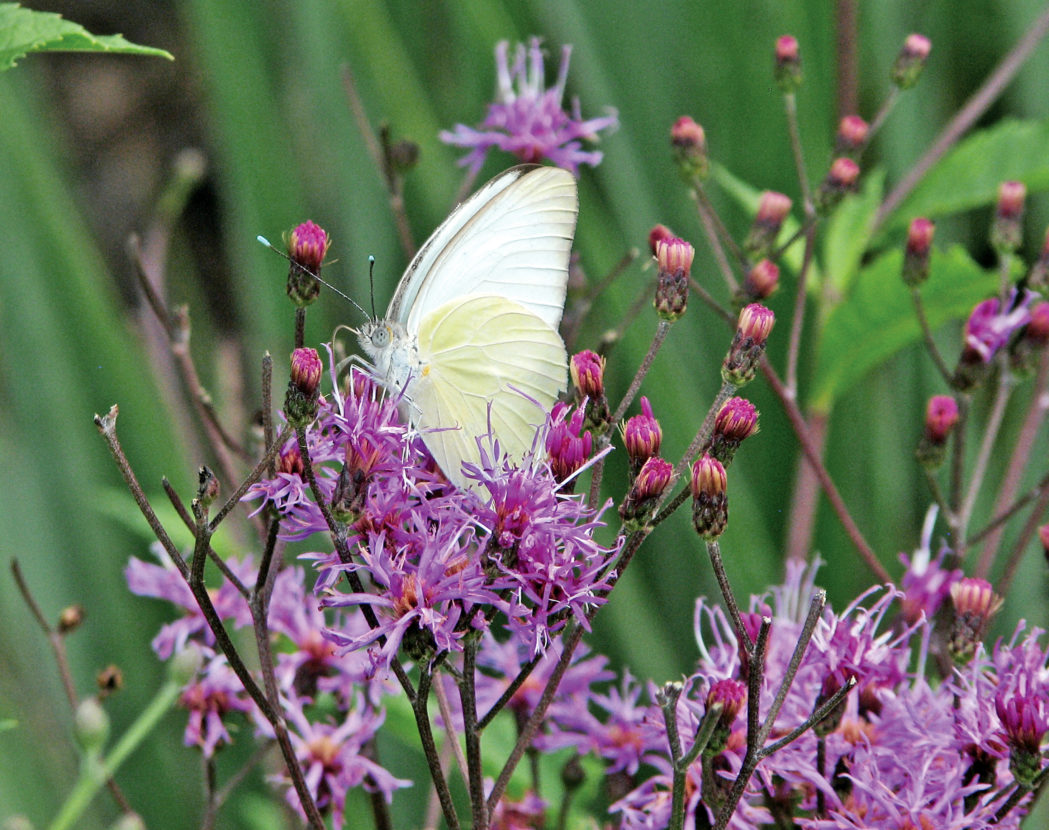Tall ironweed
Pictured above: Metallic wood-boring beetle (Acmaeodera sp.) on Tall ironweed (Vernonia angustifolia) by Mary Keim. Click on terms for botanical definitions. View post as a PDF.
Tall ironweed (Vernonia angustifolia) is a beautiful summer-blooming wildflower that occurs naturally in dry habitats such as sandhills, open woodlands, pine flatwoods and roadsides. Its vibrant magenta blooms attract butterflies, bees and hummingbirds.
Tall ironweed is also commonly called Narrow-leaf ironweed for its long, linear leaves, which range from 3 to 6 inches in length. They are dark green, alternately arranged and have a rough feel. The deep purple flowers are arranged in corymbs, with each flowerhead consisting of up to 30 tubular disk florets. Seeds are born in cypselae, each topped with a conspicuous pappus.
The genus Vernonia is named for British botanist William Vernon, who collected and documented plants in the Mid-Atlantic United States during the late 1600s. The species epithet angustifolia comes from the Latin angustus, meaning “narrow,” and folia, meaning “leaf.”
Family: Asteraceae (Aster, composite or daisy family)
Native range: Panhandle and peninsula south to Highlands County
To see where natural populations of Tall ironweed have been vouchered, visit florida.plantatlas.usf.edu.
Lifespan: Perennial
Soil: Dry, well-drained sandy soil
Exposure: Full sun to part shade
Growth habit: 3-4’ tall
Propagation: Seed
Florida regions of landscape suitability: North, Central
Garden tips: Tall ironweed is drought resistant and makes an excellent addition to a mixed wildflower meadow or as a back border in a native plant garden.
Tall ironweed is available from nurseries that specialize in Florida native plants. Visit www.PlantRealFlorida.org to find a nursery in your area. Seeds may be available from the Florida Wildflower Growers Cooperative at www.FloridaWildflowers.com.
Learn more about Tall ironweed from the Florida Native Plant Society and the Institute for Regional Conservation.
For more information on other Vernonia species, see these resources:



